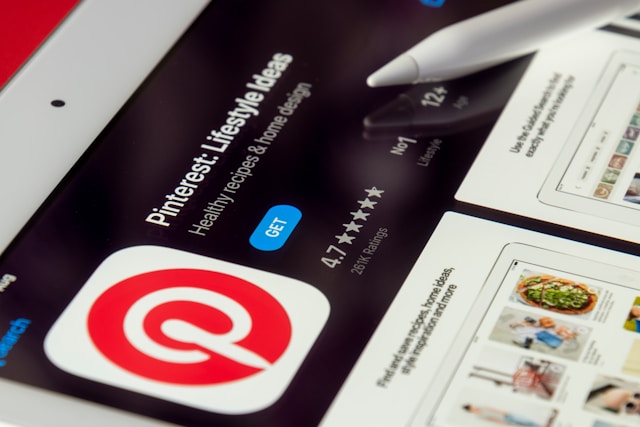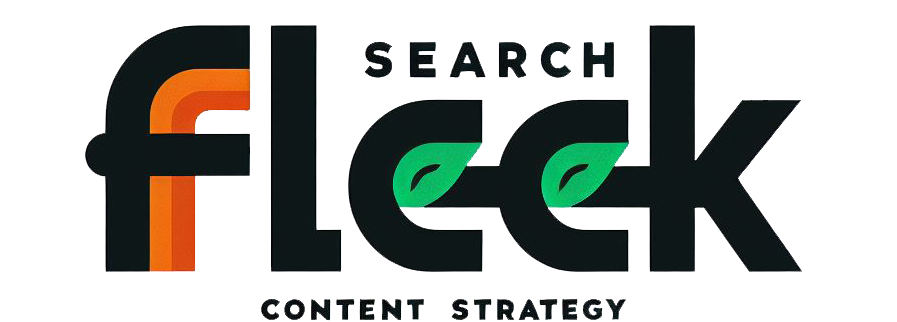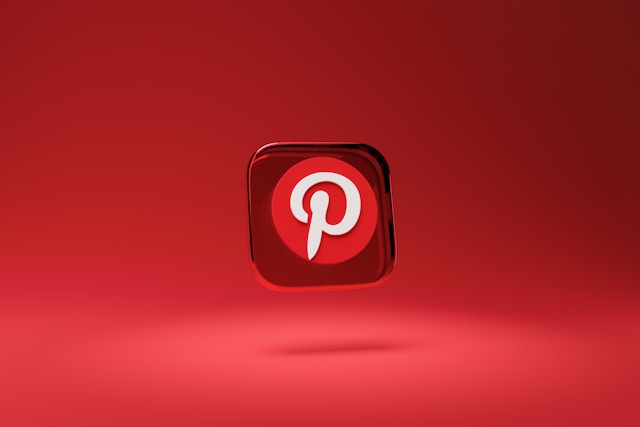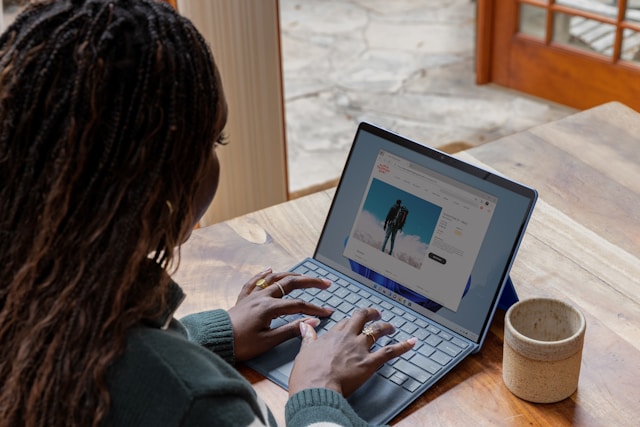In today’s digital landscape, bloggers constantly seek new avenues to expand their reach and attract readers. Pinterest, a visually-driven social media platform often categorized as an image-sharing site, emerges as a powerful tool for bloggers to achieve exactly that.
This guide delves deep into how bloggers can leverage Pinterest to drive significant traffic to their websites. We’ll explore essential strategies for building a strong foundation, creating captivating content, attracting a dedicated audience, and ultimately converting those viewers into loyal blog readers.
Building a Strong Pinterest Foundation

Before diving into content creation, establishing a solid Pinterest presence is crucial. Here’s how to lay the groundwork for success:
Keyword Research and Strategy
Just like search engines, Pinterest users rely on keywords to discover content. Conduct keyword research to identify relevant terms your target audience searches for. Tools like Pinterest Trends and keyword research tools for SEO can be immensely helpful in this process. Once you have a list of relevant keywords, strategically integrate them into your profile description, board titles, and pin descriptions to improve searchability.
Creating Compelling Pinterest Boards
Imagine Pinterest boards as themed folders that categorize your content. Well-organized boards that reflect your blog’s niche are essential for attracting the right audience. Here’s how to create captivating boards:
- Board Naming and Description: Choose clear and concise titles that accurately represent the board’s content. Utilize relevant keywords in your descriptions to enhance discoverability.
- Board Sections: For broader topics, consider creating sections within your boards for further organization. This allows you to categorize content within a specific theme, making it easier for users to navigate and find what they’re looking for.
- Content Curation: Curate high-quality content from other sources relevant to your niche. This demonstrates your expertise and provides valuable resources for your audience. However, ensure you credit the original source appropriately.
- Creating Your Own Pins: While curation is valuable, don’t shy away from creating your own unique pins. This allows you to showcase your brand identity and personality.
Designing Eye-Catching Pins
The visual appeal of your pins is paramount on Pinterest. Here’s how to design pins that grab attention and entice users to click through:
Pin Size and Aspect Ratio: Use the recommended aspect ratio of 2:3 for optimal display on both desktops and mobile devices.
High-Quality Visuals: Invest in high-quality images or create visually appealing graphics using design tools like Canva. Remember, captivating visuals are the first impression users have of your content.
Design Principles: Utilize clear and easy-to-read fonts. Maintain a consistent color palette that aligns with your brand identity. Use white space effectively to avoid overwhelming viewers.
Design Tools and Resources: There are numerous free and paid design tools available. Explore options like Canva, Adobe Spark, or Stencil to create professional-looking pins. Consider investing in premium stock photos or creating your own unique graphics for a more distinctive look.
A/B Testing: Don’t be afraid to experiment! Try different design elements and color combinations to see what resonates best with your audience. Utilize Pinterest’s analytics to track click-through rates (CTRs) and identify high-performing pin designs.
Crafting Engaging Pin Descriptions
Compelling pin descriptions are crucial for capturing user interest and encouraging clicks. Here’s how to craft effective descriptions:
- Clarity and Conciseness: Keep your descriptions clear, concise, and informative. Aim for around 50-60 characters, ensuring the most important information is displayed without truncation.
- Strong Calls to Action (CTAs): Tell users what you want them to do. Use strong CTAs like “Read Now,” “Learn More,” or “Get Inspired” to entice them to visit your blog post.
- Keyword Optimization: Integrate relevant keywords naturally into your descriptions to improve search ranking. However, avoid keyword stuffing, which can appear spammy.
- Compelling Language: Use engaging and descriptive language that sparks curiosity and makes users want to learn more about your blog post.
- Character Limits: Be mindful of character limitations. While the official limit is 500 characters, only around 60-80 characters are displayed before truncation on most devices.
Harness the Power of Rich Pins for Greater Visibility
Rich Pins are a powerful tool for bloggers looking to maximize their presence on Pinterest. Unlike standard pins, Rich Pins include additional information directly on the pin itself, making them more informative and engaging.
Types of Rich Pins and Their Benefits
- Article Rich Pins: Ideal for bloggers, Article Rich Pins include a headline, author, and a link to your blog post. This format helps your pins stand out in the Pinterest feed and provides essential details at a glance. According to HubSpot, Article Rich Pins also feature a larger logo image, which can improve brand recognition and drive more traffic to your site.
- Product Rich Pins: If your blog includes product recommendations or reviews, Product Rich Pins can display real-time pricing, availability, and where to buy. This added layer of detail can boost user engagement and conversion rates.
- Recipe Rich Pins: For food bloggers, Recipe Rich Pins include ingredients and cooking times, making them highly functional for users seeking specific recipes.
Implementing Rich Pins
To get started with Rich Pins, you need a Pinterest Business account. HubSpot emphasizes the importance of applying for Rich Pins through Pinterest’s developer site and verifying your blog’s meta tags. Once approved, Rich Pins automatically sync with your blog’s content, ensuring your pins are always up-to-date with the latest information.
Statistics: HubSpot notes that Rich Pins can increase engagement by up to 70%, making them a valuable addition to any Pinterest strategy. By providing more context and details, they help attract more clicks and interactions with your content.
Utilize Pinterest Analytics to Enhance Your Strategy
Understanding how your pins perform is crucial for optimizing your Pinterest strategy. Pinterest Analytics provides valuable insights into how users interact with your content, which can help refine your approach and drive better results.
Key Metrics to Monitor
- Impressions: This metric shows how many times your pins have been viewed. Tracking impressions helps you gauge the visibility of your content and identify trends in user interest.
- Saves: Saves indicate how often users have bookmarked your pin to their own boards. A high number of saves suggests that your content is resonating with your audience and may be influential in their decision-making process.
- Click-Through Rate (CTR): This metric measures how many times users click through from your pin to your blog. A higher CTR indicates that your pin descriptions and images are effectively driving traffic to your site.
- Engagement Rate: This encompasses likes, comments, and repins. Engaging content encourages interaction, which can increase your pin’s reach and visibility.
Using Data to Optimize Your Strategy
HubSpot advises leveraging Pinterest Analytics to experiment with different types of content, pin designs, and posting times. By analyzing which pins perform best, you can refine your strategy to focus on what resonates most with your audience. Regularly reviewing your analytics ensures that you stay aligned with trends and continuously improve your Pinterest marketing efforts.
Statistics: According to HubSpot, businesses that regularly use Pinterest Analytics see a 50% increase in engagement over those that don’t, highlighting the importance of data-driven decision-making in enhancing Pinterest performance.
Growing Your Pinterest Audience and Driving Traffic
Building a dedicated audience is key to driving significant traffic to your blog. Here are strategies to expand your reach and attract viewers:
Pinning Strategies and Best Practices
Scheduling Consistency is key! Schedule pins throughout the day and week for optimal reach. Utilize Pinterest’s native scheduling tool or third-party schedulers to streamline this process.
Pinning Frequency: Aim to pin consistently, ideally several times a day. However, avoid overwhelming users with excessive content. Find a balance that keeps your audience engaged without bombarding them.
Engagement: Be an active participant on Pinterest. Like, comment on, and repin relevant content from other users. This fosters a sense of community and increases your visibility.
Group Boards: Collaborate with others in your niche by participating in relevant group boards. This exposes your content to a wider audience and allows you to tap into established communities. However, ensure the group boards are high-quality and well-moderated.
Promoting Your Pins and Boards
While organic reach is valuable, consider these additional methods to promote your pins and boards:
- Cross-Promotion: Leverage your existing social media platforms to promote your Pinterest content. Share your pins on Facebook, Twitter, or Instagram to drive traffic to your Pinterest profile.
- Collaborations: Partner with other bloggers and influencers in your niche for joint pin creations or board collaborations. This allows you to tap into each other’s audiences and expand your reach.
- Pinterest Ads: Explore Pinterest Ads for targeted promotion of your pins and boards. This can be a powerful tool to reach a highly specific audience interested in your content.
Converting Pinterest Traffic into Blog Readers
Once you’ve attracted viewers to your pins, the goal is to convert them into loyal blog readers. Here’s how to optimize your blog for success:
Mobile Optimization: Remember, a significant portion of Pinterest traffic comes from mobile devices. Ensure your blog website is mobile-friendly and offers a seamless user experience on all devices.
Compelling Headlines and Introductions: Craft captivating headlines and introductions for your blog posts that entice users to click through from your pins.
Social Sharing Buttons: Make it easy for users to share your content on their own social media platforms by adding clear and easy-to-find social sharing buttons to your blog posts.
Measuring Your Success and Optimizing Your Strategy

Data analysis is crucial for gauging the effectiveness of your Pinterest efforts. Here’s how to measure your success and continuously improve your strategy:
Understanding Pinterest Analytics
Utilize Pinterest Analytics to track key metrics like impressions (number of times your pins are displayed), saves (users bookmarking your pins for future reference), clicks (users visiting your website from your pins), and audience demographics. Analyze these metrics to understand what type of content resonates with your audience and identify areas for improvement.
Continuously Optimizing Your Pinterest Presence
Don’t be afraid to experiment and adapt your strategy based on data insights. Here’s how to optimize your Pinterest presence for long-term success:
- Data-Driven Decisions: Analyze your Pinterest analytics regularly and use the data to inform your content creation and pinning strategies.
- Experimentation: Test different pin formats, content themes, and scheduling times to see what works best for your audience.
- Staying Updated: The Pinterest algorithm and user behavior are constantly evolving. Stay updated on the latest trends and best practices by following relevant industry blogs and resources.
Conclusion
By implementing the strategies outlined above, bloggers can leverage Pinterest as a powerful tool to drive significant traffic to their websites.
Remember, success on Pinterest requires consistent effort, strategic planning, and a commitment to creating high-quality content that resonates with your target audience. Start building your Pinterest presence today and watch your blog readership soar!
Additional Resources:
- Pinterest for Business: https://business.pinterest.com/
- Pinterest Trends: https://trends.pinterest.com/
- Canva: https://www.canva.com/
- Adobe Spark: https://www.adobe.com/express/
- Stencil: https://getstencil.com/
Emon Anam, CEO of Search Fleek, isn't your typical digital guru. He brings a unique blend of financial expertise (former banking pro!) and digital marketing mastery to the table. A self-proclaimed "SEO Sherlock Holmes," Emon unlocks content secrets for local businesses and SaaS companies. But beyond the keyboard, he's a devoted family man, music enthusiast, and cricket champion. Let Emon weave your digital success story!
AI Writing Disclaimer
This post was initially researched and outlined by me. The content was then generated by an AI language model using the provided information. The final text has been reviewed and edited by me for accuracy and clarity.




